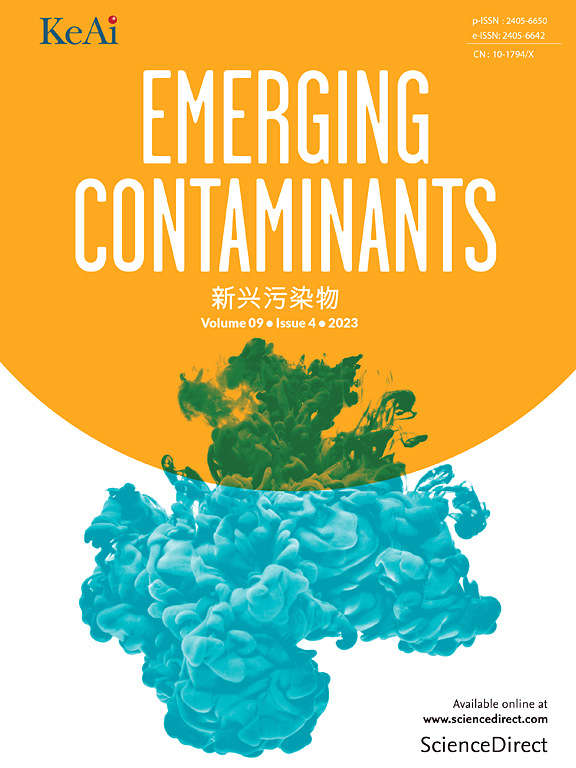地表水中抗生素耐药性的来源、传播和风险评估综述
IF 6.9
2区 环境科学与生态学
Q1 ENVIRONMENTAL SCIENCES
引用次数: 0
摘要
抗生素耐药性(AR)的发展和传播已成为人们关注的主要问题,因为它们在世界范围内构成了紧迫的公共卫生问题,而水生生态系统是公认的抗生素耐药基因(ARGs)和抗生素耐药细菌(ARB)的储库。本文综述了地表水ARGs和ARB的来源、分布和影响因素,以及测量和评估其对人类健康和生态健康风险的方法。ARGs和ARB的流行主要归因于粪便污染的环境。因此,AR在区域和季节尺度上的分布都受到农业的显著影响,这与经济发展有关。在风险评估中,ARGs的风险评估主要基于其移动性、病原体携带情况和区域分布,而ARB的风险评估主要关注病原体相关耐药菌的数量和多样性。基于这些信息,我们提出了七个关于水环境中抗生素耐药性管理的优先研究问题:AR传播控制、先进监测技术、抗生素对耐药机制和微生物群落的综合影响评估、ARB和ARGs的定量微生物风险评估、非致病性细菌水平基因转移的影响、多种耐药元素的协同风险、水生生态系统中高风险ARGs和ARB的识别。我们还主张实施以污染源管理和环境监测为重点的国家行动。本文章由计算机程序翻译,如有差异,请以英文原文为准。

Sources, dissemination, and risk assessment of antibiotic resistance in surface waters: A review
The development and spread of antibiotic resistance (AR) have become major concerns because they pose pressing public health problems worldwide, and aquatic ecosystems are recognized reservoirs for antibiotic resistance genes (ARGs) and antibiotic-resistant bacteria (ARB). We reviewed the sources, distribution, and factors influencing ARGs and ARB in surface waters, and the methods used to measure and assess the risks posed to human and ecological health. The prevalence of ARGs and ARB is largely attributed to environmental contamination from fecal matter. Therefore, the distribution of AR on both regional and seasonal scales is significantly impacted by agriculture, which is related to economic development. In risk assessments, the risk of ARGs is mainly evaluated based on their mobility, pathogen carriage, and regional distribution, while the risk assessment for ARB is primarily focused on the quantities and diversities of pathogen-associated resistant bacteria. Based on this information, we suggest seven priority research questions regarding antibiotic resistance management in water environments: control of AR dissemination, advanced monitoring technologies, integrative impacts evaluation of antibiotics on resistance mechanisms and microbial communities, quantitative microbial risk assessment for ARB and ARGs, implications of horizontal gene transfer in non-pathogenic bacteria, synergistic risks of multiple resistance elements, and identification of high-risk ARGs and ARB in aquatic ecosystems. We also advocate for the implementation of national actions that focus on source management and environmental monitoring.
求助全文
通过发布文献求助,成功后即可免费获取论文全文。
去求助
来源期刊

Emerging Contaminants
Medicine-Public Health, Environmental and Occupational Health
CiteScore
10.00
自引率
6.70%
发文量
35
审稿时长
44 days
期刊介绍:
Emerging Contaminants is an outlet for world-leading research addressing problems associated with environmental contamination caused by emerging contaminants and their solutions. Emerging contaminants are defined as chemicals that are not currently (or have been only recently) regulated and about which there exist concerns regarding their impact on human or ecological health. Examples of emerging contaminants include disinfection by-products, pharmaceutical and personal care products, persistent organic chemicals, and mercury etc. as well as their degradation products. We encourage papers addressing science that facilitates greater understanding of the nature, extent, and impacts of the presence of emerging contaminants in the environment; technology that exploits original principles to reduce and control their environmental presence; as well as the development, implementation and efficacy of national and international policies to protect human health and the environment from emerging contaminants.
 求助内容:
求助内容: 应助结果提醒方式:
应助结果提醒方式:


